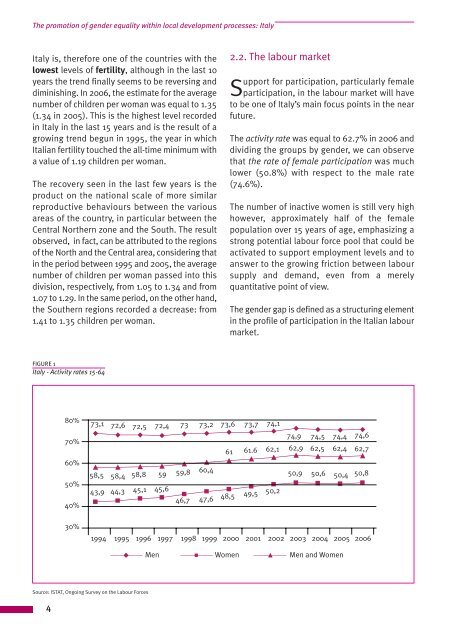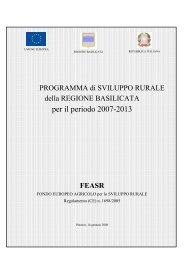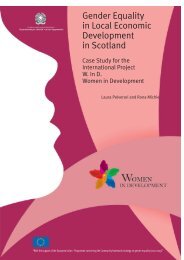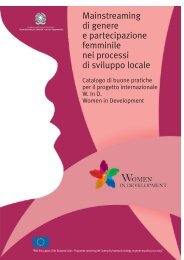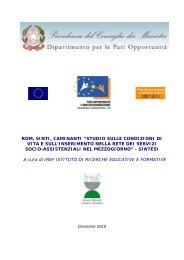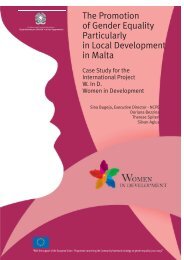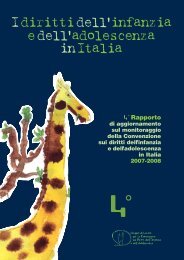The Promotion of Gender Equality within Local Development ...
The Promotion of Gender Equality within Local Development ...
The Promotion of Gender Equality within Local Development ...
Create successful ePaper yourself
Turn your PDF publications into a flip-book with our unique Google optimized e-Paper software.
<strong>The</strong> promotion <strong>of</strong> gender equality <strong>within</strong> local development processes: ItalyItaly is, therefore one <strong>of</strong> the countries with thelowest levels <strong>of</strong> fertility, although in the last 10years the trend finally seems to be reversing anddiminishing. In 2006, the estimate for the averagenumber <strong>of</strong> children per woman was equal to 1.35(1.34 in 2005). This is the highest level recordedin Italy in the last 15 years and is the result <strong>of</strong> agrowing trend begun in 1995, the year in whichItalian fertility touched the all-time minimum witha value <strong>of</strong> 1.19 children per woman.<strong>The</strong> recovery seen in the last few years is theproduct on the national scale <strong>of</strong> more similarreproductive behaviours between the variousareas <strong>of</strong> the country, in particular between theCentral Northern zone and the South. <strong>The</strong> resultobserved, in fact, can be attributed to the regions<strong>of</strong> the North and the Central area, considering thatin the period between 1995 and 2005, the averagenumber <strong>of</strong> children per woman passed into thisdivision, respectively, from 1.05 to 1.34 and from1.07 to 1.29. In the same period, on the other hand,the Southern regions recorded a decrease: from1.41 to 1.35 children per woman.2.2. <strong>The</strong> labour marketSupport for participation, particularly femaleparticipation, in the labour market will haveto be one <strong>of</strong> Italy’s main focus points in the nearfuture.<strong>The</strong> activity rate was equal to 62.7% in 2006 anddividing the groups by gender, we can observethat the rate <strong>of</strong> female participation was muchlower (50.8%) with respect to the male rate(74.6%).<strong>The</strong> number <strong>of</strong> inactive women is still very highhowever, approximately half <strong>of</strong> the femalepopulation over 15 years <strong>of</strong> age, emphasizing astrong potential labour force pool that could beactivated to support employment levels and toanswer to the growing friction between laboursupply and demand, even from a merelyquantitative point <strong>of</strong> view.<strong>The</strong> gender gap is defined as a structuring elementin the pr<strong>of</strong>ile <strong>of</strong> participation in the Italian labourmarket.FIGURE 1Italy - Activity rates 15-64Source: ISTAT, Ongoing Survey on the Labour Forces4


